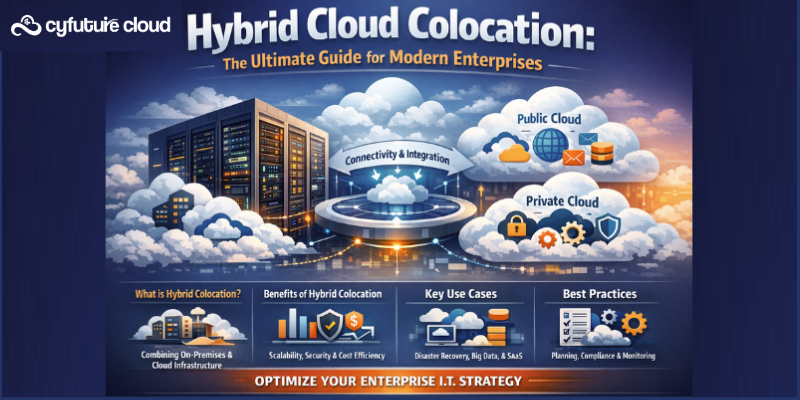Table of Contents
- What is Iops in Cloud Computing:
- Definition of IOPS (Input/Output Operations Per Second)
- Importance of Transactional Performance in Cloud Computing
- How IOPS affects Transactional Performance in the Cloud?
- Choosing the Right IOPS Level for your Transactional Workloads
- Overview of Cloud Instance Types & their IOPS Capabilities
- Case Studies of Successful Implementations of High IOPS Instances for Transactional Workloads
- Summing Up!
Did you know that IOPS (Input/Output Operations Per Second) can significantly impact the performance of transactional workloads in the cloud? A study by Cloud Spectator revealed that some cloud instances provide up to 10 times more IOPS than others, making it crucial to select the right IOPS level and instance for optimal application performance.
In this article, we’ll explore IOPS and its pivotal role in transactional performance within the cloud environment. We’ll unravel the complexities surrounding IOPS and equip you with essential insights to make informed decisions when choosing the ideal IOPS level and cloud instance for your specific workloads.
Join us as we explore how IOPS can be a game-changer for your cloud-based applications, unlocking unparalleled performance and efficiency. Discover actionable strategies to leverage the power of IOPS effectively, ensuring your applications run seamlessly and deliver exceptional results. Don’t miss out on this opportunity to optimize your cloud infrastructure and propel your business to new heights of success!
What is Iops in Cloud Computing:
Instances in cloud computing refer to virtualized computing environments that provide computational power, memory, and storage based on the user’s needs. These instances are essentially virtual machines or containers running on the cloud provider’s physical hardware. They allow users to deploy and run applications, perform computations, store data, and handle various tasks without needing to invest in and manage physical infrastructure. Instances come in various types and sizes to accommodate different workloads, offering flexibility, scalability, and cost-effectiveness by allowing users to pay for the resources they use on-demand. Users can choose specific configurations and operating systems for their instances, tailoring them to meet specific requirements while leveraging the scalability and accessibility provided by cloud computing services.
Definition of IOPS (Input/Output Operations Per Second)
IOPS (Input/Output Operations Per Second) is a measure of the rate at which input/output (I/O) operations can be performed by a computer system or storage device. It is a common performance metric used to evaluate the capabilities of a storage system, particularly in the context of storage area networks (SANs) and cloud computing.
In general, the higher the IOPS rating of a storage system, the faster it can perform I/O operations. For example, a storage system with a high IOPS rating might be able to perform thousands or even tens of thousands of I/O operations per second, while a system with a lower IOPS rating might only be able to perform a few hundred operations per second.
IOPS is typically used to evaluate the performance of storage systems in terms of their ability to handle multiple requests simultaneously, as well as their ability to access and transfer data quickly. It is often used as a benchmark for comparing the performance of different storage systems and is an important factor to consider when choosing a Cloud storage solution for a particular application or workload.
Importance of Transactional Performance in Cloud Computing
Transactional performance is an important factor in cloud computing because it determines the speed at which data can be read from or written to a storage system. This is important in cloud environments because it can affect the performance of applications that rely on the cloud for data storage and retrieval.
For example, if a cloud-based database has low transactional performance, it may take longer for queries to be processed, which can slow down the overall performance of the application. This can be frustrating for users of the application and can also lead to decreased productivity. On the other hand, a storage system with high transactional performance can help ensure that data is accessed quickly and efficiently, which can improve the overall performance of cloud-based applications.
In addition to the performance of individual applications, transactional performance is also important for the overall efficiency of a cloud computing environment. A storage system with high transactional performance can help ensure that resources are used effectively and efficiently, which can help reduce costs and improve the overall performance of the cloud environment.
How IOPS affects Transactional Performance in the Cloud?
The IOPS (Input/Output Operations Per Second) rating of a storage system is a measure of its ability to perform input/output (I/O) operations per second. In a cloud computing environment, the IOPS rating of a storage system can affect the transactional performance of the cloud in several ways:
– Data access and transfer speed: The IOPS rating of a storage system is a measure of its speed at performing I/O operations. In general, the higher the IOPS rating, the faster the storage system can access and transfer data. This can be important in a cloud environment because it can affect the performance of applications that rely on the cloud for data storage and retrieval. If a storage system has a low IOPS rating, it may take longer for an application to access and transfer data, which can negatively impact its performance.
– Concurrent request handling: The IOPS rating of a storage system is also a measure of its ability to handle multiple requests simultaneously. In a cloud environment, it is common for multiple applications to be accessing and transferring data concurrently. A storage system with a high IOPS rating will be able to handle these concurrent requests more efficiently, improving the overall transactional performance of the cloud.
– Cost efficiency: In a cloud environment, resources are typically shared among multiple users. A storage system with a high IOPS rating may be able to handle requests more efficiently, which can help reduce the overall demand for resources and improve cost efficiency.
Overall, the IOPS rating of a storage system can have a significant impact on the transactional performance of a cloud environment. A storage system with a high IOPS rating can help ensure that data is accessed and transferred quickly and efficiently, improving the performance of applications and the overall efficiency of the cloud.
IOPS as a Measure of Storage Performance
The IOPS rating of a storage system is a measure of its ability to perform input/output (I/O) operations per second. In general, the higher the IOPS rating of a storage system, the faster it can perform I/O operations and the better its transactional performance will be. In a cloud computing environment, this can be important because it can affect the speed at which data can be accessed and transferred, which can impact the performance of applications that rely on the cloud for data storage and retrieval.
IOPS and Database Performance
The IOPS rating of a storage system can also affect the performance of a database running in the cloud. A database relies on being able to access and transfer data quickly in order to process queries efficiently. If a storage system has a low IOPS rating, it may take longer for the database to access and transfer data, which can slow down query processing and negatively impact the performance of the database. On the other hand, a storage system with a high IOPS rating can help ensure that the database is able to access and transfer data quickly, improving its overall performance.
IOPS and Application Performance
The IOPS rating of a storage system can also affect the performance of applications running in the cloud. If a storage system has a low IOPS rating, it may take longer for an application to access and transfer data, which can negatively impact its performance. On the other hand, a storage system with a high IOPS rating can help ensure that an application is able to access and transfer data quickly, improving its overall performance. In general, the better the transactional performance of a storage system, the better the performance of the applications that rely on it will be.
Choosing the Right IOPS Level for your Transactional Workloads
Choosing the right IOPS (Input/Output Operations Per Second) level for your transactional workloads is important because it can impact the performance and efficiency of your storage system. There are several factors to consider when determining your IOPS needs, including the type of workload, the data access patterns, the size of the data being transferred, and the performance requirements of your workload. It is generally a good idea to use workload modeling tools or consult with experts to help estimate your IOPS requirements and to test and monitor your storage system to ensure that it is able to meet those requirements. By carefully considering your IOPS needs and monitoring your storage system, you can help ensure that your transactional workloads are able to perform at their best.
Factors to Consider when Determining IOPS Needs
There are several factors to consider when determining the IOPS (Input/Output Operations Per Second) level that is right for your transactional workloads:
– Workload type: Different workloads have different I/O patterns and requirements. For example, a workload that involves a lot of small, random read-and-write operations may require a higher IOPS level than a workload that involves large, sequential read-and-write operations.
– Data access patterns: The way in which data is accessed and transferred can also impact IOPS requirements. For example, if data is accessed and transferred in large, sequential blocks, it may not be necessary to have as high an IOPS level as if data is being accessed and transferred in small, random blocks.
– Data size: The size of the data being transferred can also impact IOPS requirements. In general, larger data transfers will require a higher IOPS level than smaller transfers.
– Performance requirements: The performance requirements of your workload will also impact IOPS requirements. If your workload requires very fast data access and transfer speeds, you will need a higher IOPS level to meet those requirements.
Best Practices for Estimating IOPS Requirements
There are several best practices for estimating IOPS requirements:
– Benchmark existing systems: One of the best ways to estimate IOPS requirements is to benchmark existing systems. This can help you understand the I/O patterns and requirements of your workload and can provide a baseline for estimating IOPS needs.
– Use workload modeling tools: There are a number of tools available that can help you model the I/O patterns and requirements of your workload. These tools can be useful for estimating IOPS needs, particularly if you have a complex or unusual workload.
– Consult with experts: If you are unsure of your IOPS requirements, it can be helpful to consult with experts or vendors who have experience with similar workloads. They may be able to provide guidance and recommendations based on their knowledge and experience.
Testing and Monitoring IOPS Levels
Once you have determined your IOPS requirements, it is important to test and monitor your storage system to ensure that it is able to meet those requirements. This can help you identify any potential issues or bottlenecks and allow you to make adjustments as needed.
There are a number of tools and techniques that you can use to test and monitor IOPS levels, including:
– Load testing: Load testing involves simulating real-world workloads in a controlled environment to see how a storage system performs under different load conditions. This can help you understand the IOPS capabilities of your storage system and identify any potential issues or bottlenecks.
– Performance monitoring: Performance monitoring involves collecting and analyzing data on the performance of your storage system over time. This can help you understand the IOPS capabilities of your storage system and identify any changes or trends that may indicate a problem.
Overall, it is important to carefully consider your IOPS requirements and to test and monitor your storage system to ensure that it is able to meet those requirements. This can help you ensure the best possible performance for your transactional workloads.
Overview of Cloud Instance Types & their IOPS Capabilities
In cloud computing, instance types refer to the hardware configuration of virtual machines (VMs) that are used to host applications. Different instance types offer different combinations of CPU, memory, and storage resources, and are designed to meet the needs of different types of workloads.
Instance types can also vary in their IOPS (Input/Output Operations Per Second) capabilities, which is a measure of the rate at which input/output (I/O) operations can be performed by a computer system or storage device. The IOPS capabilities of an instance type can be an important factor to consider when choosing a VM for a particular workload, as it can impact the performance and efficiency of the VM.
In general, instance types that offer more CPU, memory, and storage resources will also have higher IOPS capabilities. For example, high-memory instance types that are designed for in-memory databases and other high-performance workloads may offer higher IOPS capabilities than instance types that are designed for more general-purpose workloads.
It is worth noting that the IOPS capabilities of an instance type can be affected by a number of factors, including the type of storage that is attached to the instance, the type of workload that is being run, and the overall performance of the cloud environment. As a result, it is important to carefully consider your IOPS needs when choosing an instance type and to monitor the performance of your VM to ensure that it is meeting your requirements.
Case Studies of Successful Implementations of High IOPS Instances for Transactional Workloads
It can be helpful to review case studies of successful implementations of high IOPS instances for transactional workloads in order to get a better understanding of how these instances can be used in practice. Here are a couple of examples of case studies that demonstrate the benefits of using high IOPS instances for transactional workloads:
#Case Study 1
A financial services company implemented high IOPS instances for their transactional database workloads, which resulted in significant improvements in database performance and reduced latency for their customers. The company was experiencing performance issues with its existing database infrastructure, which was impacting the performance of its applications and causing frustration for its customers. By implementing high IOPS instances, the company was able to process transactions more quickly and efficiently, improving the overall performance of their applications and providing a better user experience for their customers.
#Case Study 2
An online retailer implemented high IOPS instances for their e-commerce platform, which resulted in faster page load times and improved user experience. The retailer was looking to improve the performance of their platform, which was experiencing slow page load times and other issues. By implementing high IOPS instances, the retailer was able to process transactions more quickly and efficiently, improving the overall performance of their platform. This resulted in faster page load times, which provided a better user experience for their customers and helped drive sales.
These case studies demonstrate the benefits of using high IOPS instances for transactional workloads. By implementing high IOPS instances, both of these organizations were able to improve the performance and efficiency of their applications, which provided a better user experience and helped drive business results. These case studies highlight the importance of carefully considering IOPS requirements when choosing a cloud infrastructure for transactional workloads and the benefits that can be gained by implementing high IOPS instances.
Summing Up!
IOPS (Input/Output Operations Per Second) is a measure of the rate at which input/output (I/O) operations can be performed by a computer system or storage device. It is an important factor to consider when evaluating the performance of a storage system, particularly in the context of cloud computing. The IOPS rating of a storage system can affect the speed at which data is accessed and transferred, which can impact the performance of applications that rely on the cloud for data storage and retrieval. When choosing the right IOPS level and cloud instance for your workloads, it is important to consider the type of workload, data access patterns, data size, and performance requirements in order to ensure the best possible performance.
Recent Post
Send this to a friend

 Server
Colocation
Server
Colocation CDN
Network
CDN
Network Linux
Cloud Hosting
Linux
Cloud Hosting Kubernetes
Kubernetes Pricing
Calculator
Pricing
Calculator
 Power
Power
 Utilities
Utilities VMware
Private Cloud
VMware
Private Cloud VMware
on AWS
VMware
on AWS VMware
on Azure
VMware
on Azure Service
Level Agreement
Service
Level Agreement 



















